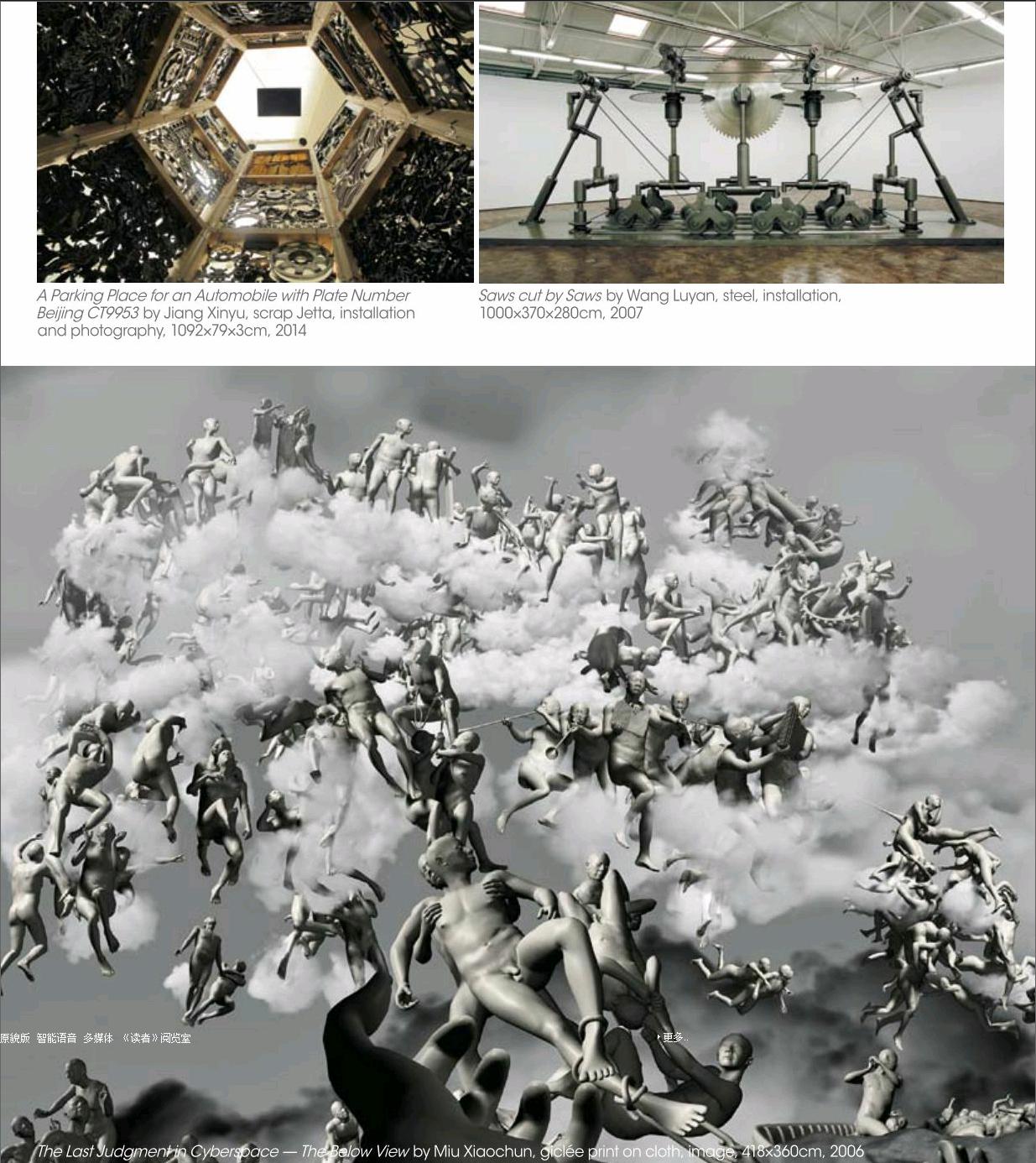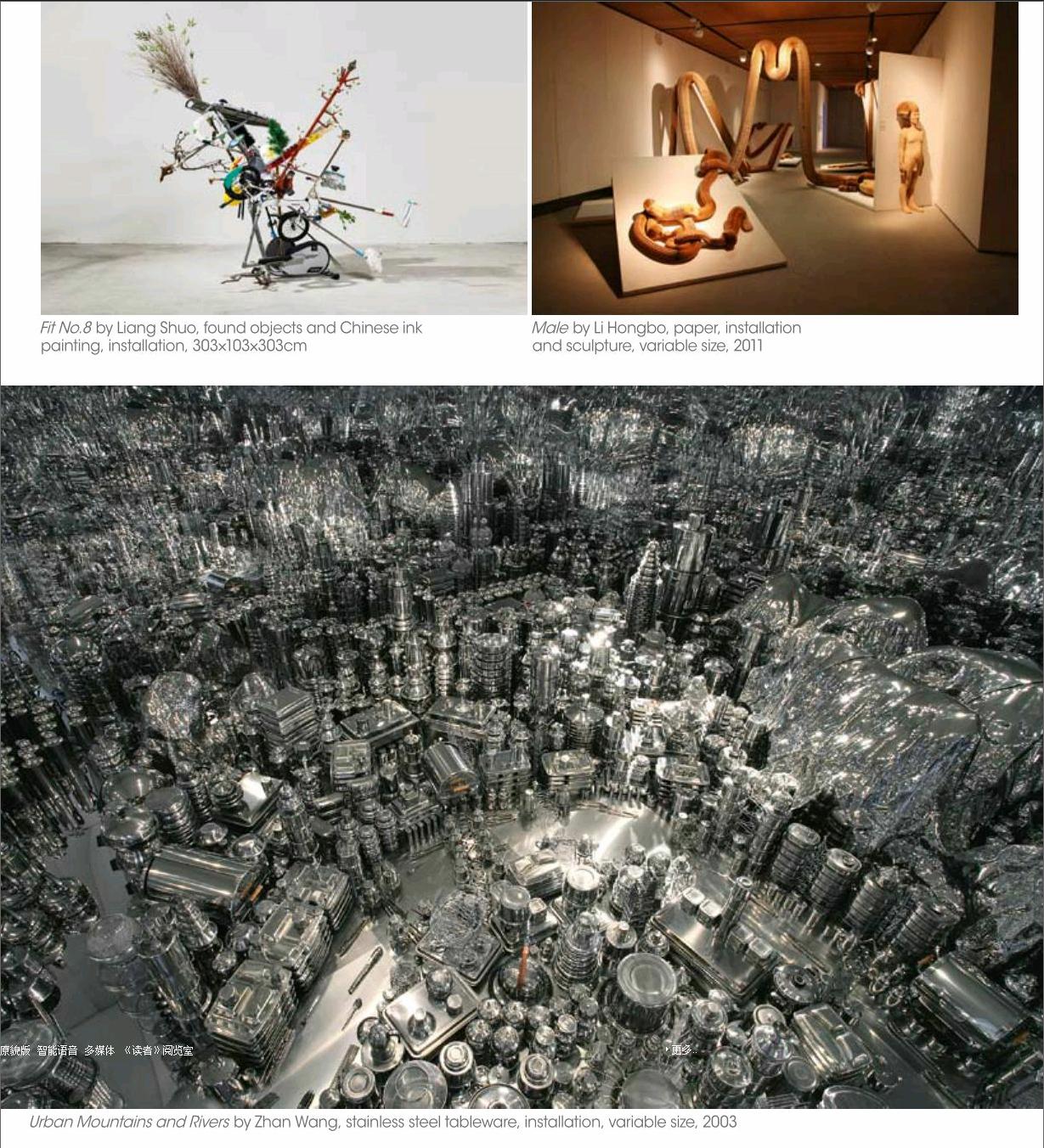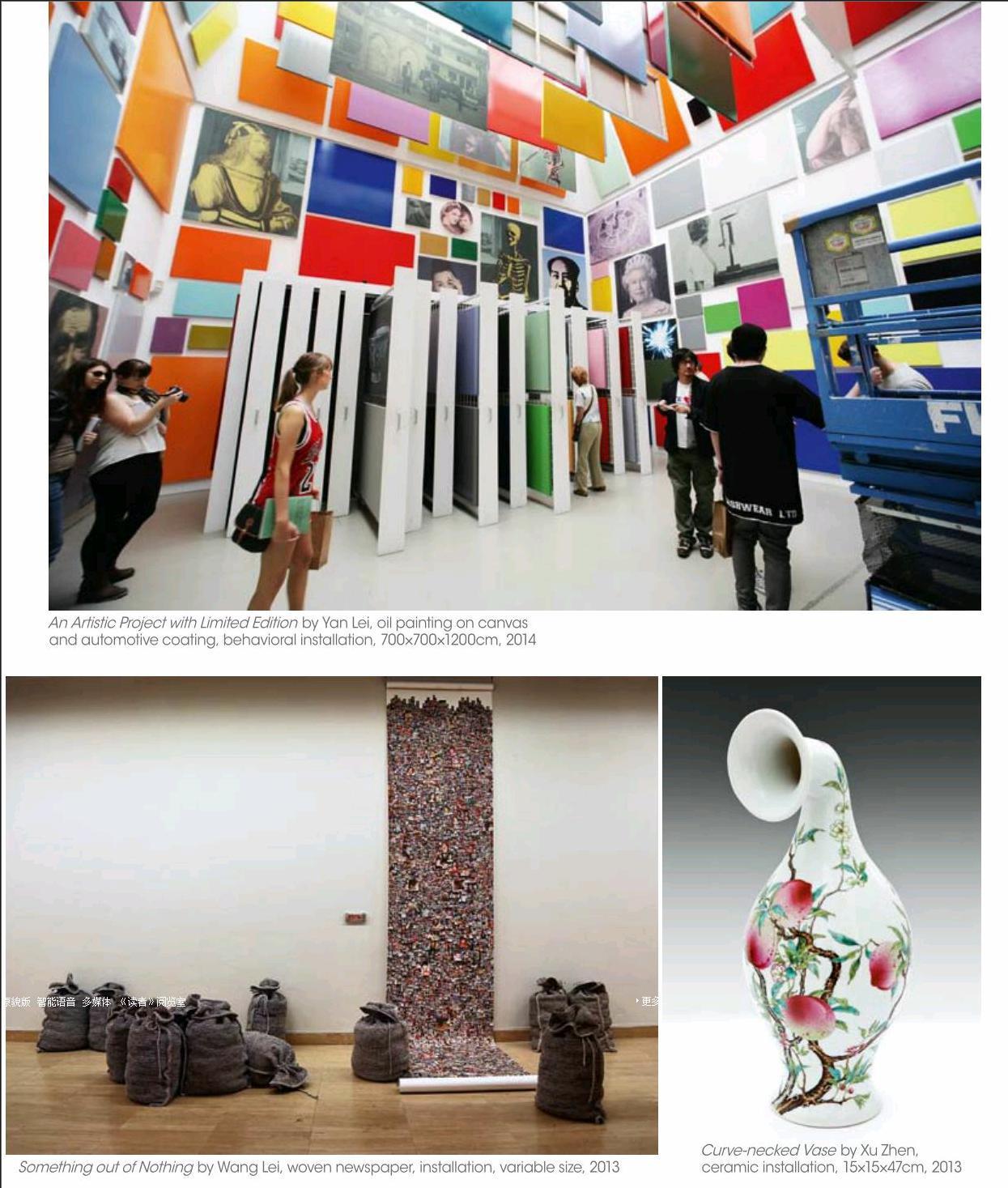Experimenting with the Experimental
by+Meng+Yuan



On September 8, 2014, the 12th National Art Exhibitions Experimental Art Section wrapped after displaying representative works created by 50 Chinese experimental artists during the past decade.“Experimental art” emphasizes different ways of thinking from traditional art, which can be conveyed not only through new media like installations and photography, but also traditional art genres like painting. To some degree, the concept of experimental art overlaps with avant-garde art, contemporary art, pioneer art and new media art. “Contemporary art emphasizes the time, which is now, while avant-garde art emphasizes space, which stares us in the face,” explains Lu Shengzhong, dean of the Experimental Art Department of the Central Academy of Fine Arts. “But experimental art is about ways of thinking and working.”
The exhibition provided retrospection on the development of experimental art in China over the past ten years. Due to materials or size, some works could only be displayed through documentation rather than actual presence. For example, performance art, which usually plays an important role in international art exhibitions, was not shown in this exhibition except in documentation. Song Dong, a famous Chinese performance artist, only appeared in big pictures. This void was lamented by organizers. Despite the cautious selection of the organizing committee, the exhibition only showcased the tip of the iceberg of Chinese experimental art due to restrictions on space and time. Lu explained that this is the first time the National Art Exhibition added a section for experimental art, so the organizing committee had to comb through the many academic achievements of Chinas experimental artists. “Before we explore more excellent experimental creations, we must first present previous fruits, which have been neglected in past years,” adds Lu.
Ten thousand bulbs compose Manmade Moon by Wang Yuyang, a work produced in 2007 when the artist was still in graduate school. Humans frequently imitate nature and attempt to transcend it. To replace moonlight, people invented lamps and then developed energy saving lamps.“There is one moon on the sky, but another man-made ‘moon,” explains the artist.“These two things are often contradictory: Human beings continue explaining themselves and at the same time keep changing themselves.” Zhan Wangs Urban Mountains and Rivers mirrors modern life in the city. Many stainless steel pots, basins and bowls are spread across the floor, creating a glistening illusion of urban life. The cold and artificial mountains and rivers symbolize the increasing distance between masked people of modern society. Also, the work satirizes the notion that man-made things will gradually push out nature and ultimately occupy all the land and use all the water. Both Xu Zhens curve-necked vase and Xu Bings work reexamine Chinese traditional art with the spirit of experimental art and add traditional Chinese elements into contemporary art.

Compared to any work in the exhibition, the fact that experimental art was added to the National Art Exhibition for the first time became the most controversial topic. The biggest and most prestigious in the country, the National Art Exhibition is organized only every five years by Chinas Ministry of Culture, China Federation of Literary and Art Circles, and China Artists Association. Curators seek work that focuses on positive content in society. But experimental art, to some degree, stands at the edge of society and shouts a critical voice of skepticism about social and cultural changes through an independent stance to stimulate social responsibility. Many argued that experimental art in the National Art Exhibition would cause the event to lose “vast grassland and became a beast in a cage.”And one persons experimental art often loses its critical characteristics and begins catering to mainstream demand as the artist becomes “institutionalized,” a phenomenon absent from Western contemporary art due to artists tendency to remain ‘outsiders and maintain independence.
But others think that the National Art Exhibitions inclusion of experimental art proves that the official event can no longer neglect the influence of experimental art and must actively accept the new school. Zhu Qingsheng, president of the Traditional Chinese Painting Institute at Peking University, notes that many international art exhibitions, like Kassel Documenta and Venice Biennale, are supported and promoted by governments. In this sense, arguing about the National Art Exhibitions inclusion of an experimental section, as part of cultural and artistic causes pushed by the government, is not worth the breath.
Experimental art is not a form that tries to please everyone, but a pioneer in probing truths. It is not reform of traditional art but a new additional artistic face and an important step for artistic development. Generally, traditional art nurtures spectators taste with beautiful works while experimental art aims at social effects, a practice vividly demonstrated by works selected for the exhibition.

